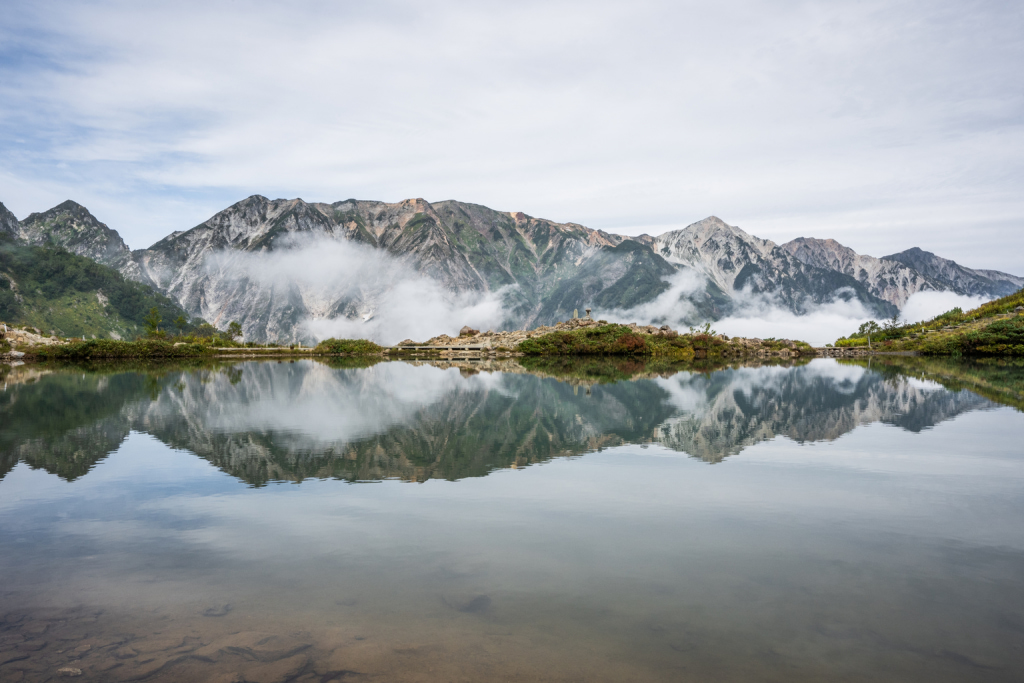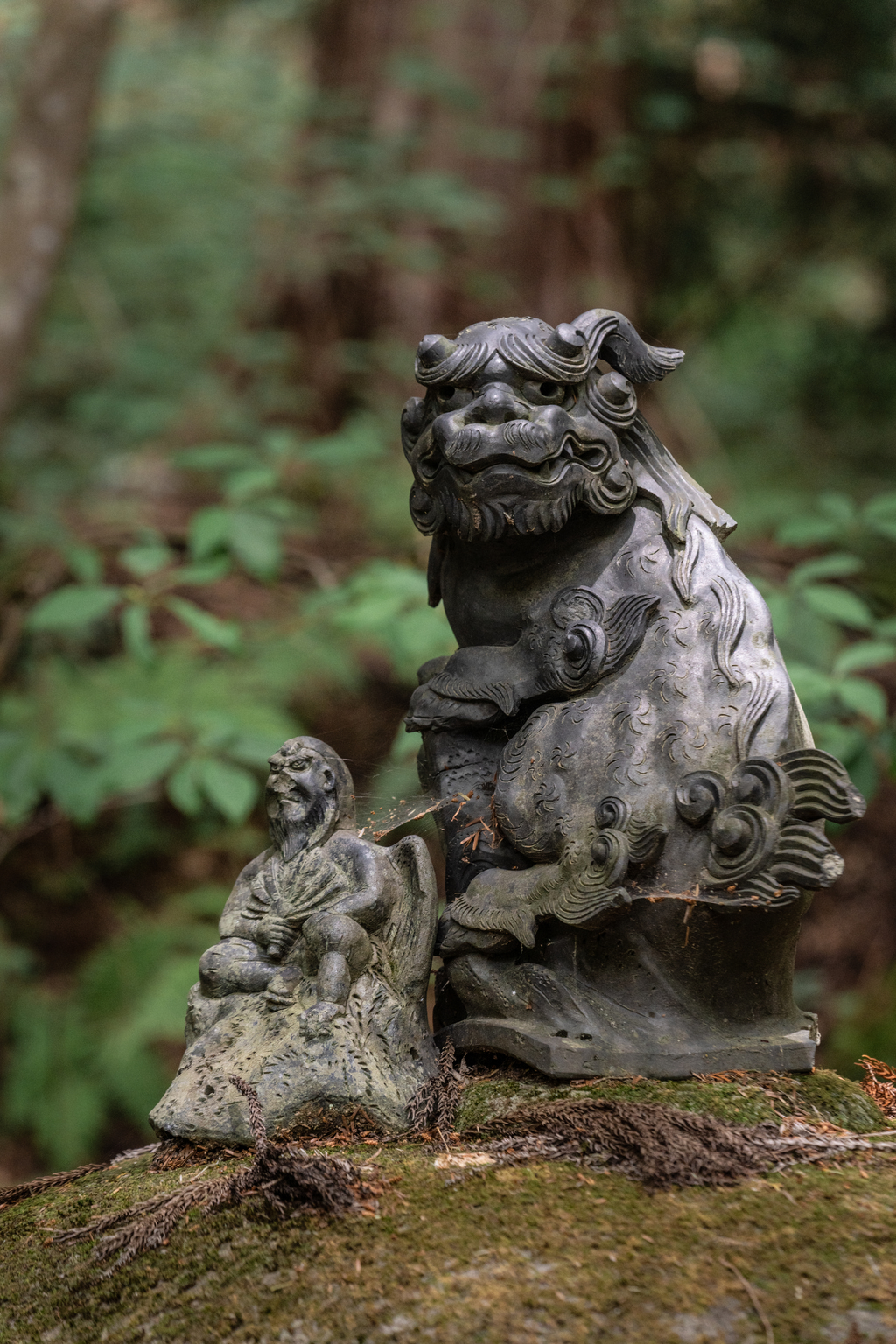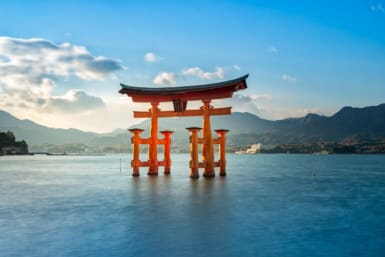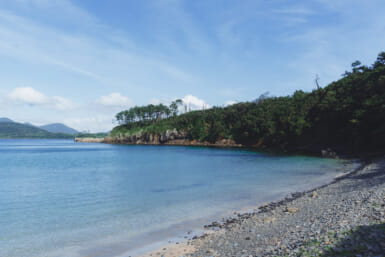Chubu Weekender cover image photographer Ben Beech spent several years living in the midst of Nagano Prefecture’s natural splendor before relocating to the capital. He often returns to recharge, get inspired and rediscover the region. He shares some of his favorite off-the-beaten-track destinations that keep him forever falling in love with his first home in Japan.
Hakuba Hikes
Happo-ike is a mountain pond situated at 2,060 meters above sea level that reflects the surrounding Japanese Alps perfectly on a clear day. You can access it via the Happo-ike Sanso mountain hut, which is located at the top of Happo-one Ski Resort, in the heart of Hakuba Valley. The hut is a great place to hunker down for the night while waiting for view of the pond at first light, before the crowds arrive. Or, if you prefer arriving at a more reasonable hour, you can hop on the ski lifts, which start turning at 8:30am. This will get you to the pond by mid-morning. The track to Happo-ike starts to the left of the hut and takes a brisk 90-minute walk to complete.
The pond is buried under a thick carpet of snow for a good six months of the year, but as the warm fronts move in and the last dregs of winter disappear, the glassy surface begins to reveal itself — usually around mid- to late June. Once it has completely thawed, its crystal-clear waters reveal an unbeatable view. Reflected in the pond you will see the three peaks of the Hakuba Sanzan: Hakuba Yarigatake, Shakushi-dake and Shirouma-dake. As you stand here, look over your shoulder and you may even catch a glimpse of Mount Fuji in the far distance if the sky is clear.
Once you’re done at the pond, you can either return the way you came or turn it into a “real” hike and traverse the ridgeline toward Karamatsu-dake, which towers an impressive 2,696 meters above sea level. This is an approximately six-hour trek from the pond, so start early and give yourself plenty of time to complete it. This is an intermediate-level hike and decent equipment, provisions, as well as a solid plan is a must. I try to hike this route in part or in full at least once every summer, when the Tokyo heat gets too hot to bear. It is, to me, the perfect nature escape.
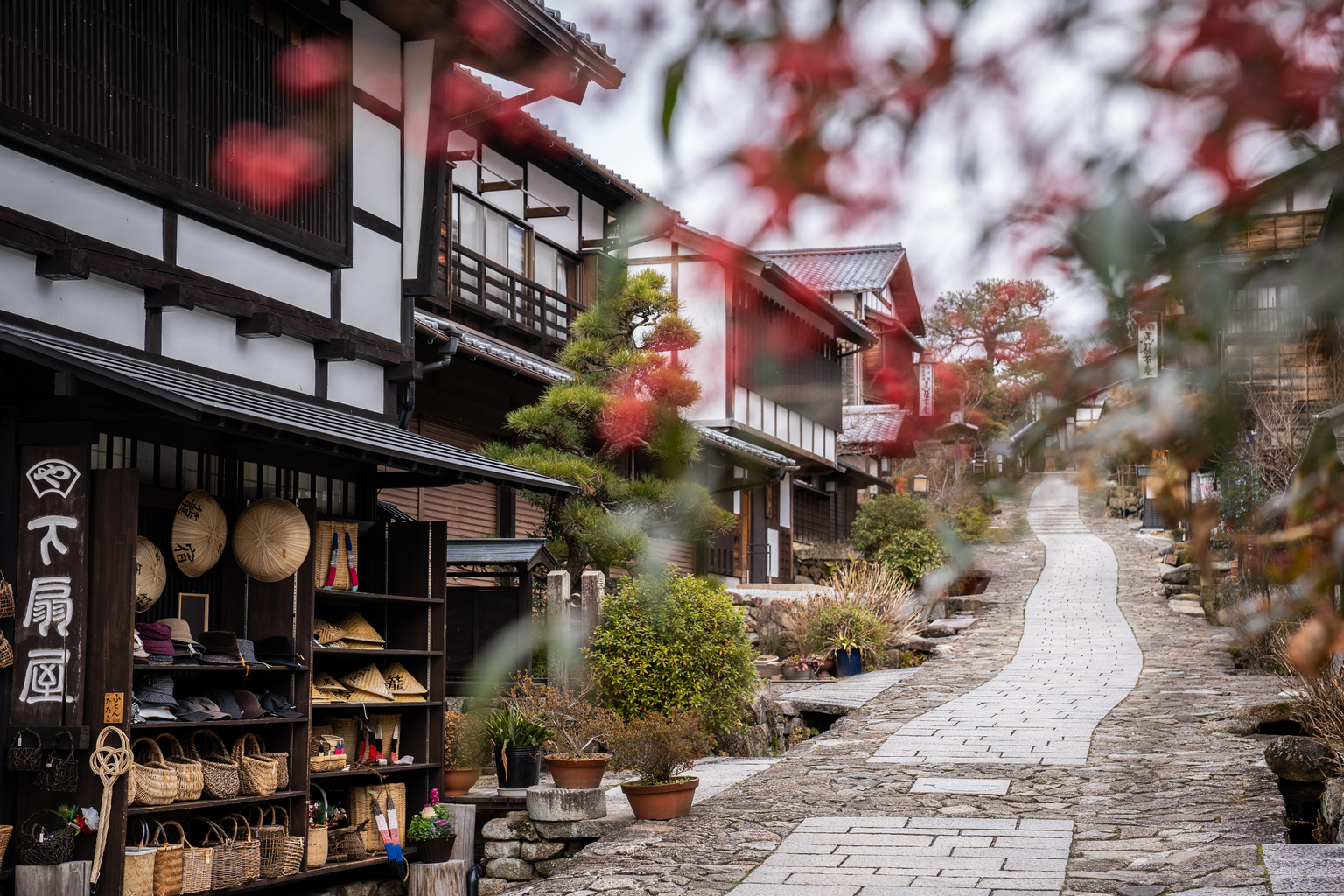
Old Town Roads
Hiking the Nakasendo trail through the Kiso Valley in central Nagano is not only a great way to see huge swaths of the prefecture, but it also allows you to follow in the footsteps of renowned artisans, poets, merchants and warriors.
Many travelers preferred the inland Nakasendo route over its famous older brother, the Tokaido coastal path, as it took travelers through stunning mountainscapes, providing them with inspiration in their art. Hiroshige Utagawa, who contributed 46 designs to a collection of 69 woodblock prints called Views of the Nakasendo, was one of these. The famous haiku master, Matsuo Basho, was another, drawing inspiration here for many of his works.
I have traversed most of the Nakasendo route over several trips, often alone, allowing myself to get fully absorbed in the beauty of the landscape — often when I needed a fresh dose of inspiration. I usually stay in ryokan along the trail or stop at rest houses for a cup of tea around the irori, which is often free of charge. The ryokan and the towns themselves maintain the atmosphere of old Japan, with very little modern amenities or luxuries available, making them a great way to disconnect from the modern world.
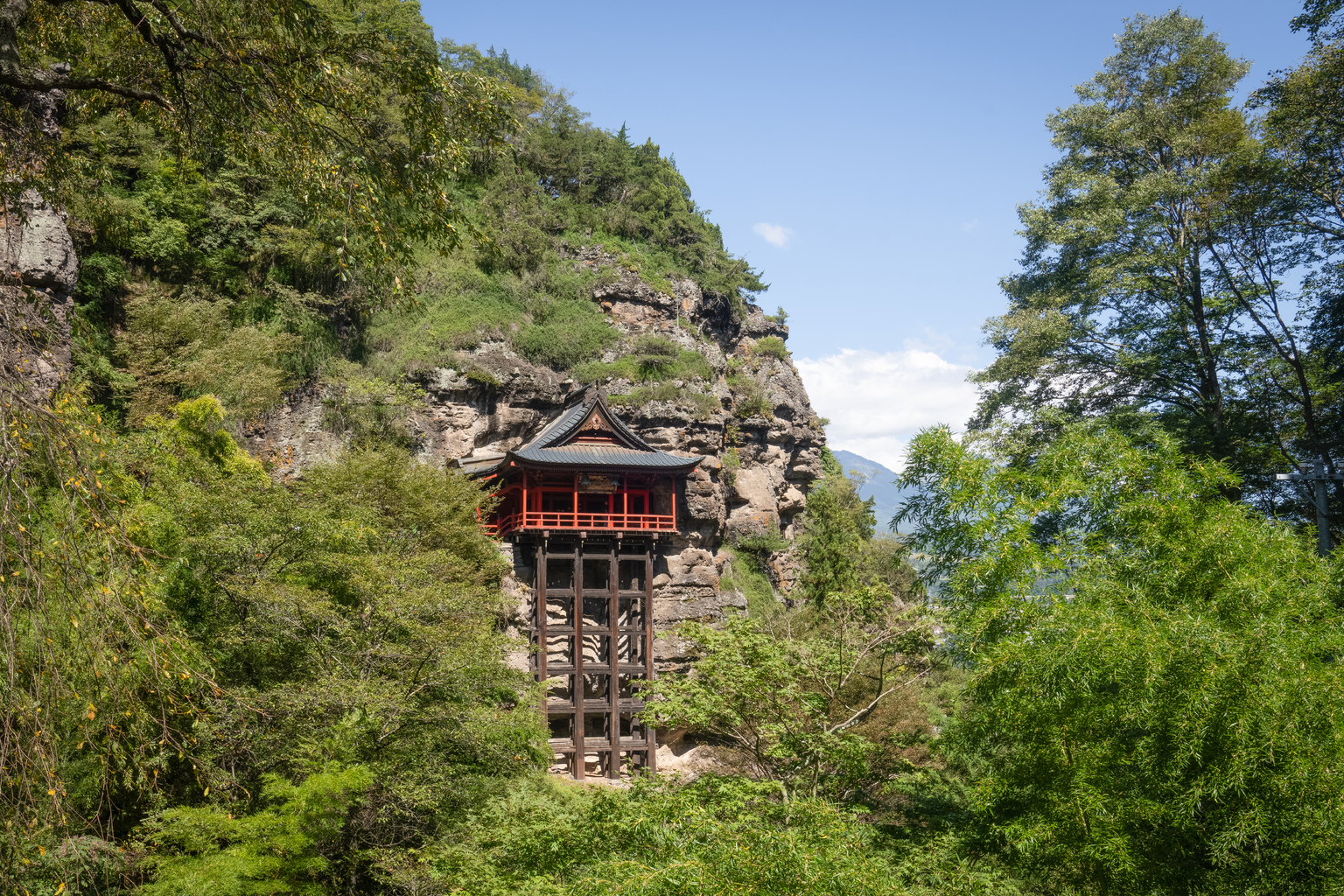
A Celestial Cow
Shakusonji Temple is a small temple clinging to a vertical rockface that overlooks the town of Komoro. You’ll find it along a ravine in a thick forest, accessible by foot from Komoro Station. It takes about three hours (round trip) that way, so visiting by car is much easier. Shakusonji is considered the sister temple to Zenkoji, the largest and most famous temple in the prefecture.
Legend says that a cow stole a precious cloth from a woman on this very spot. The woman chased the cow all the way to Zenkoji in Nagano City, where it transformed into Kannon, the goddess of mercy. The woman then returned to Shakusonji, where she enshrined the Kannon (look out for the bronze statue of a cow).
On a clear day, the wooden platform that juts out from the rockface offers a great view of Mount Asama. I often stop at this temple on my way into Nagano from Tokyo and have never seen another soul there. It is fairly out of the way, so that perhaps explains why. But in my opinion, it is always worth making the detour.
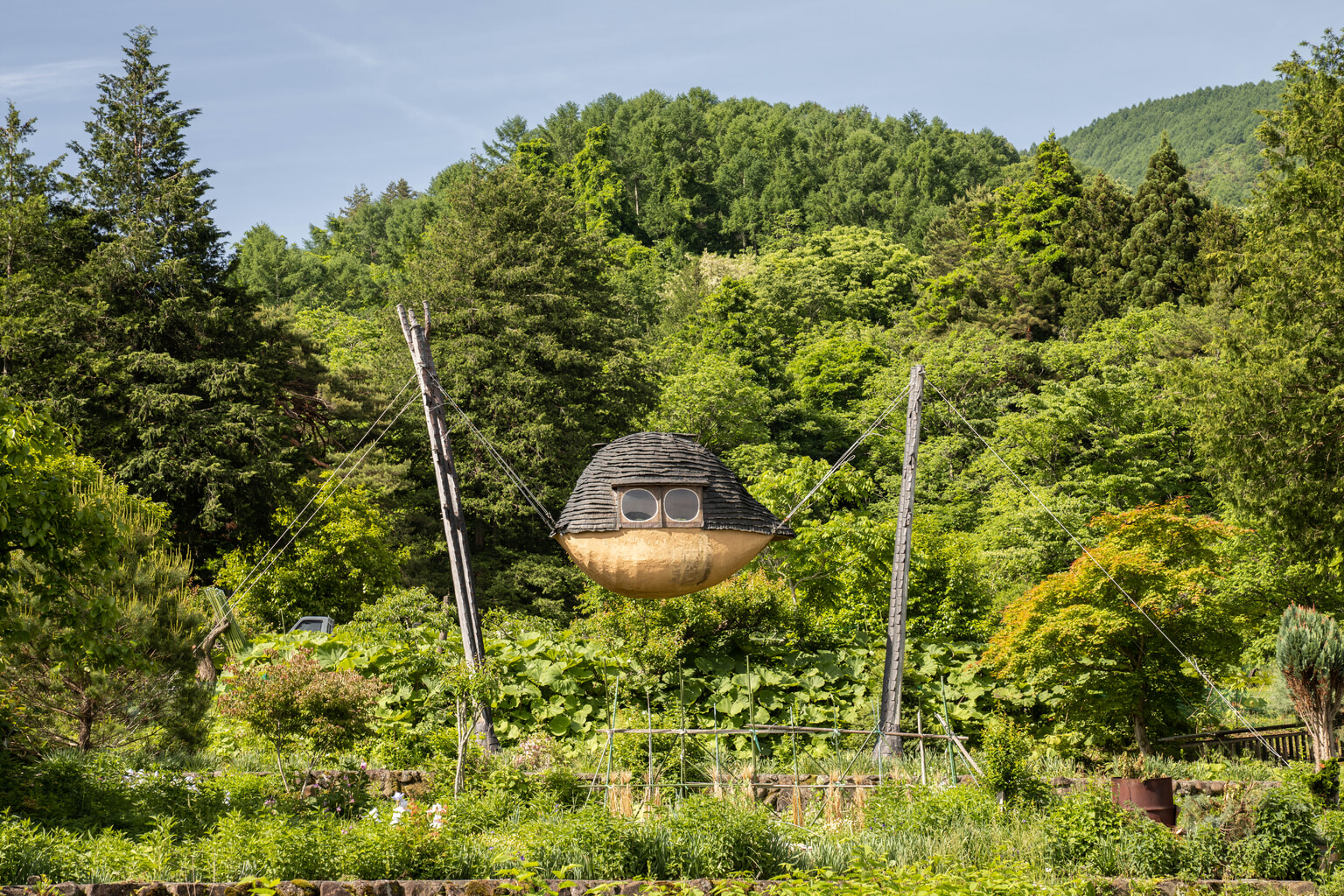
High Tea
Takasugi and the Flying Mud Boat are pair of unique teahouses in Chino City, close to Lake Suwa. They are the creations of local architect Terunobu Fujimori and are certainly eye-catching. Made using natural materials including mud, wood and plaster — all sourced locally — the teahouses were designed to stand out yet also blend into their surroundings.
The Flying Mud Boat is a boat-like structure suspended in the air between two sets of stilts. It is accessed via a ladder that is brought out for reserved events. Once inside you sit hunched over, swaying back and forth in the breeze, while enjoying a fresh cup of green tea.
Next door, Takasugi-an (literally “too tall teahouse”), also propped on stilts, is reminiscent of a treehouse. Access to the teahouses is limited and only available to those who make reservations in advance.
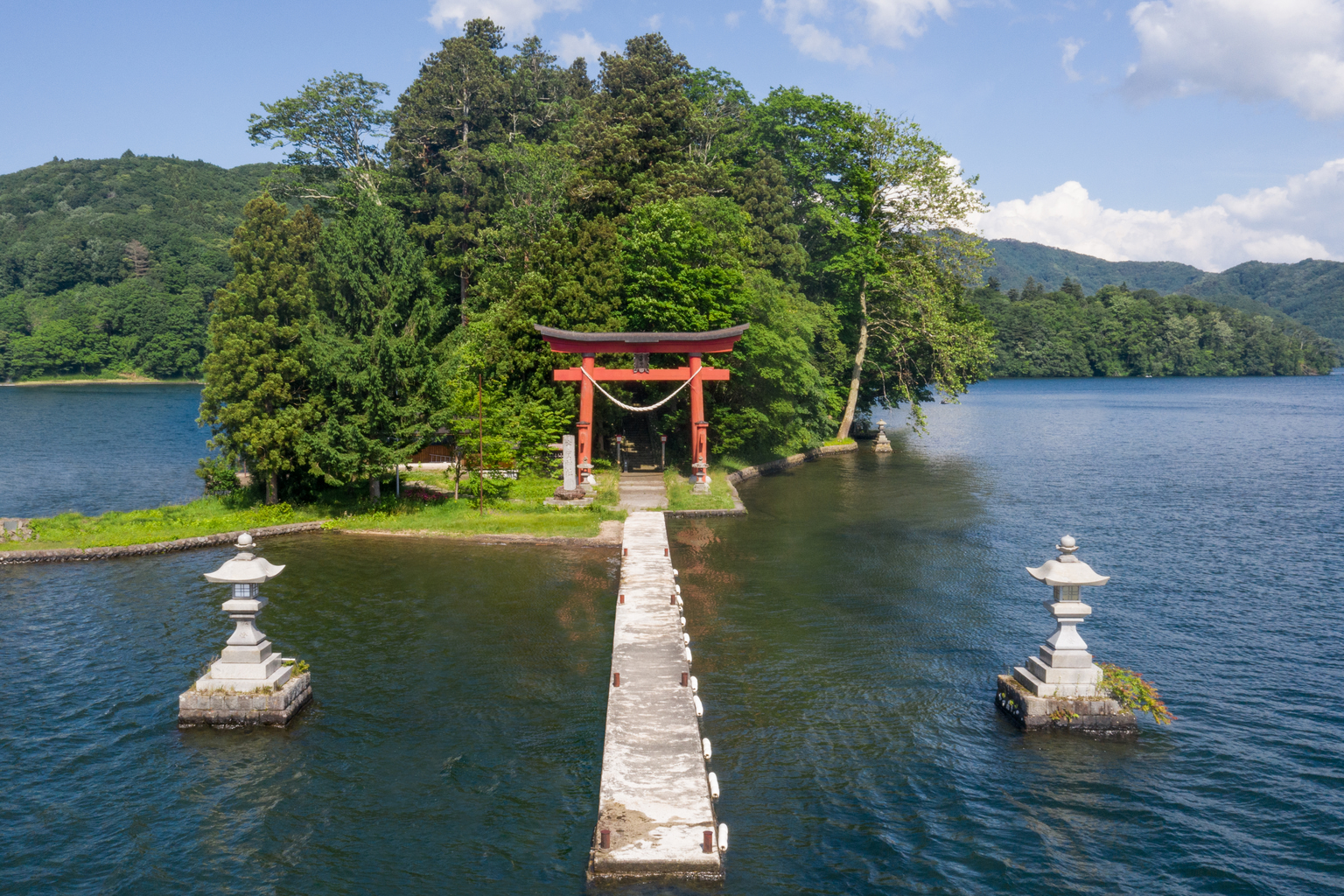
An Island Sanctuary
Uga Shrine is a small Shinto shrine that sits on Biwa Island (also known as Bentenjima) just off the shore of Lake Nojiri. The shrine has a history of some 1,300 years and is completely surrounded by a grove of cedar trees, identifiable only by the towering red torii gate at its entrance. To get here, you’ll need either a boat or a paddleboard. I usually go by paddleboard, taking off from the southern shore and docking at the long concrete pier in front of the torii gate. The trip takes no more than 20 minutes.
Once on the island, the hustle and bustle of the lake seems like a million miles away. Being surrounded on all four sides by thick trees allows you to be completely swallowed by a deadly silence. Climb a stone staircase to reach the shrine proper, which is modest in size but has a calming energy.
Elevated Spirituality
Ariakezan Shrine is a small shrine on the edge of Azumino in central Nagano at the foot of Japan’s Northern Alps. It is often frequented by yamabushi (spiritual mountain ascetics) and practitioners of Shugendo, a form of mountain worship unique to Japan. The shrine sits at the foot of Mount Ariake and is used as an access point to several peaks for those aiming to get closer to the gods.
Ariakezan Shrine is surrounded by some of the most picturesque scenery in all of Nagano, with rice fields, wildflowers and a backdrop of mountain peaks as far as the eye can see. This general area was one of the first places I discovered in Japan when I arrived over a decade ago, and has had somewhat of a grip on me ever since. I wouldn’t be surprised if I end up retiring close to here one day.
Discover more of Beech’s work on his website and on Instagram.

